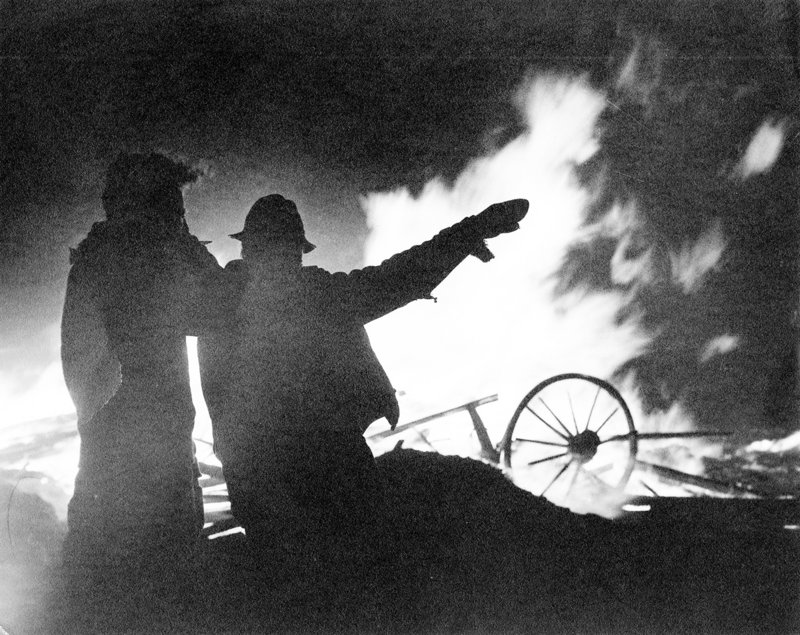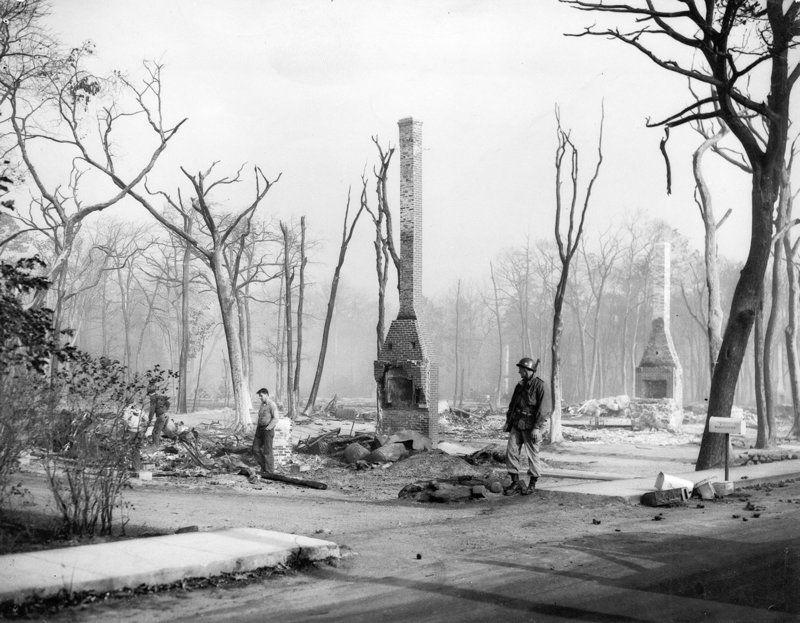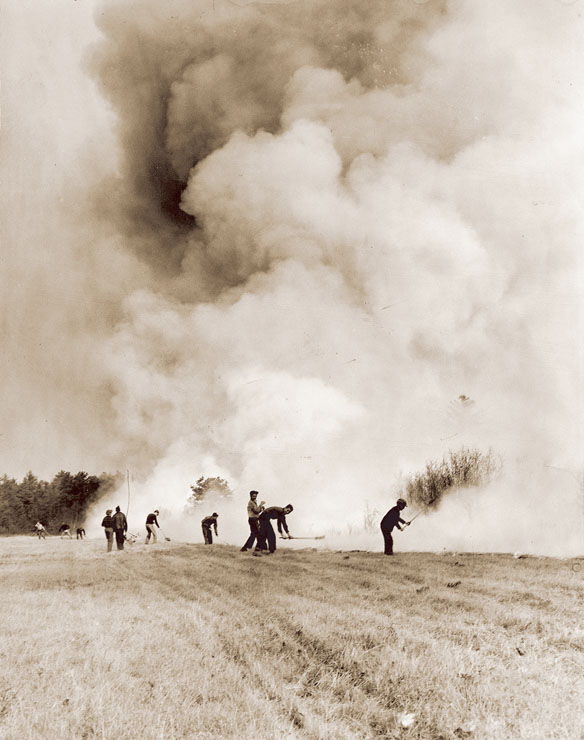Sixty-five years ago, the fall of 1947 started off so glorious no one could believe it. October was like midsummer. We had just moved back to Maine and had finally signed the papers on a century-old summer cottage on the outskirts of Prouts Neck, so with no heating system in place, we were grateful for each warm day as we prepared to winterize the place. Swimming in October seemed a wonderful treat. If we had heard of global warming, this weather would have made believers out of us. Each day was sunny and dry.
Our full attention was focused on getting a foundation under the house and replacing a chimney which had been removed when the house was raised. The next goal would be to replace the pump at the kitchen sink and, by spring, get indoor plumbing. We were totally immersed in our big dreams. This was basically a big do-it-yourself project.
Thus, we really didn’t pay attention at first as small fires sprang up in wooded areas, and besides, they were scattered — one in Scarborough, one in Gorham, one in Cape Elizabeth, and volunteer firefighters seemed to contain them easily.
But by Oct. 7, even the most preoccupied of us began to notice the constant smell of wood smoke in the air and the red glow in the night sky. Newspapers and the radio gave us the news that numerous fires were out of control in Cumberland and York counties.
Then came the Bar Harbor fire. It was huge and the week of the 13th was dubbed “The Week That Maine Burned.” Fires were popping up everywhere and the towns involved were ill equipped to fight them. Volunteers from the Army Air Corps, Navy, Coast Guard, University of Maine forestry program, even students at the Bangor Theological Seminary were pressed into service.
Here at home, my husband, father, 12-year-old brother and cousin dropped everything when word would come that a fire had sprung up in town — sometimes helping to extinguish one only to learn that another had started a few miles away. In small towns, where men often worked for local employers, the men didn’t know when they headed for work in the morning if they would be fighting fires before the day was done.
Meanwhile, the drought continued and the winds blew like no normal summer breezes, hitting your face with a warm blast. Today, when I hear of the Santa Ana winds, I think it must be like our near-hurricane winds of October 1947.
The fires continued, but it seemed that each woods fire was an individual problem until miles and miles of forest land was burning from Bar Harbor to Kennebunk. It was no longer possible to think it couldn’t reach us. Everyone was frightened. When the fire jumped across Route 1 in Arundel and continued to sweep to the Atlantic Ocean in Kennebunk, then we knew it could happen here.
Whole towns were in flames; names like Brownfield and Waterboro were in the news as they lost acres of trees and many homes. According to newspaper reports, a total of more than 1,100 homes burned, including 67 “summer cottages” in the Bar Harbor area.
All told, some 205,698 acres were burned over a three-week period of time. Remarkably, there were no fatalities, although many people were injured and many had close calls when they found themselves trapped behind a line of fire. On Mount Desert Island, a flotilla of volunteer fishermen and boaters rescued residents when the roads off the island were closed by flames.
The 1947 forest fires proved a wake-up call to the entire state. About 90 percent of Maine was forested land. Many towns began organizing fire departments, purchasing fire trucks and training personnel, implementing mutual assistance programs and setting up communication systems.
Several things came together to cause this catastrophe. There was a drought of unusual duration, winds of hurricane-like force and the entire state was unprepared for a fire of such proportion. Communication between towns was negligible. We have to remember there were no such things as cellphones, and most small-town fire departments were staffed by untrained volunteer firefighters armed with brooms and shovels and Indian tanks on their backs.
By the time the weather changed — and it did change — coming in mid-November with early cold and snow, we were glad to see the end of the fires and unseasonable warmth. In our case, our foundation was unfinished and the house was still sitting off the ground, allowing the winter winds to blow right through. It was a very long, cold winter following a long, hot summer and fall.
Elaine Frederick Killelea is a retired Portland Press Herald/Maine Sunday Telegram copy editor and resident of Scarborough.
Send questions/comments to the editors.





Comments are no longer available on this story